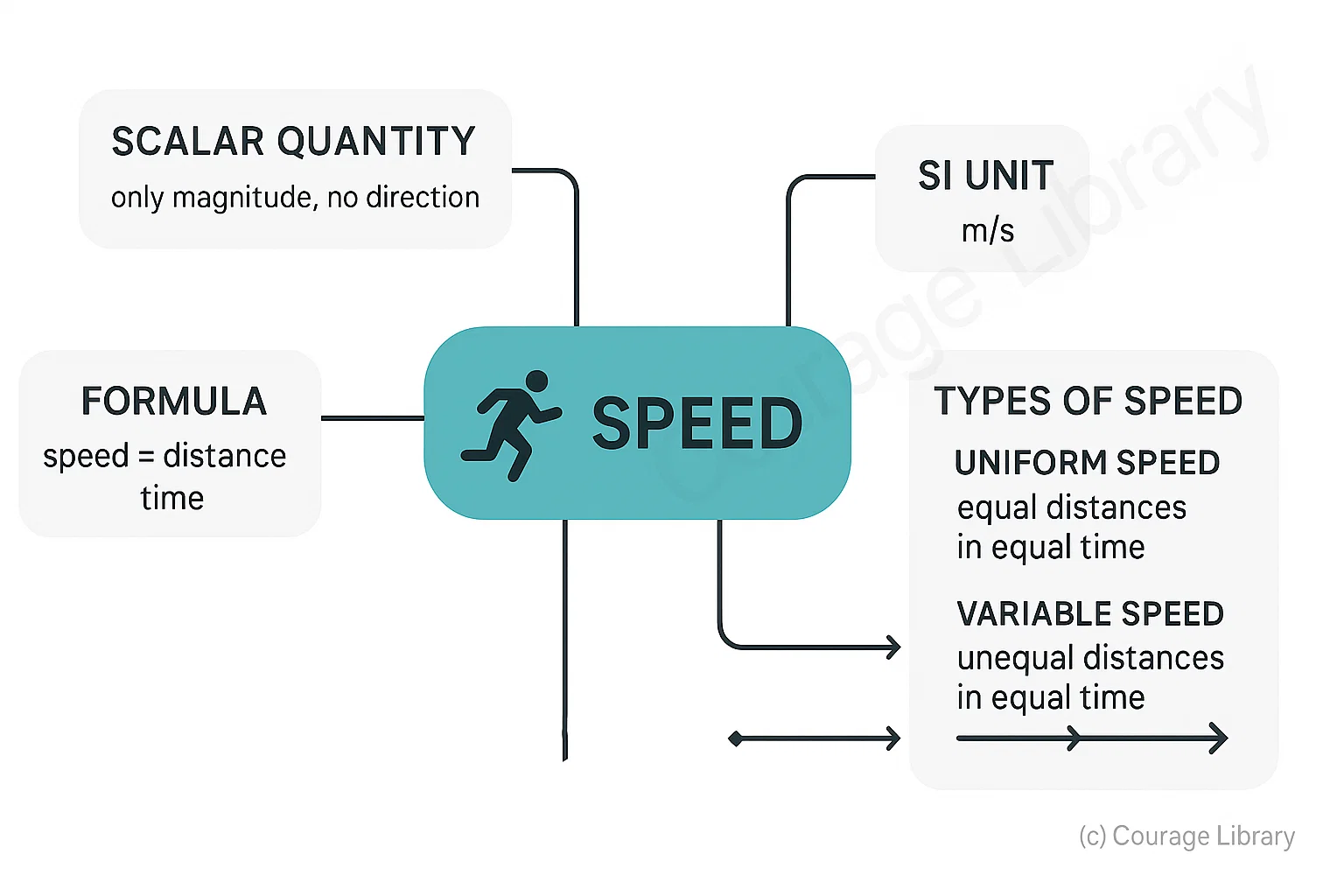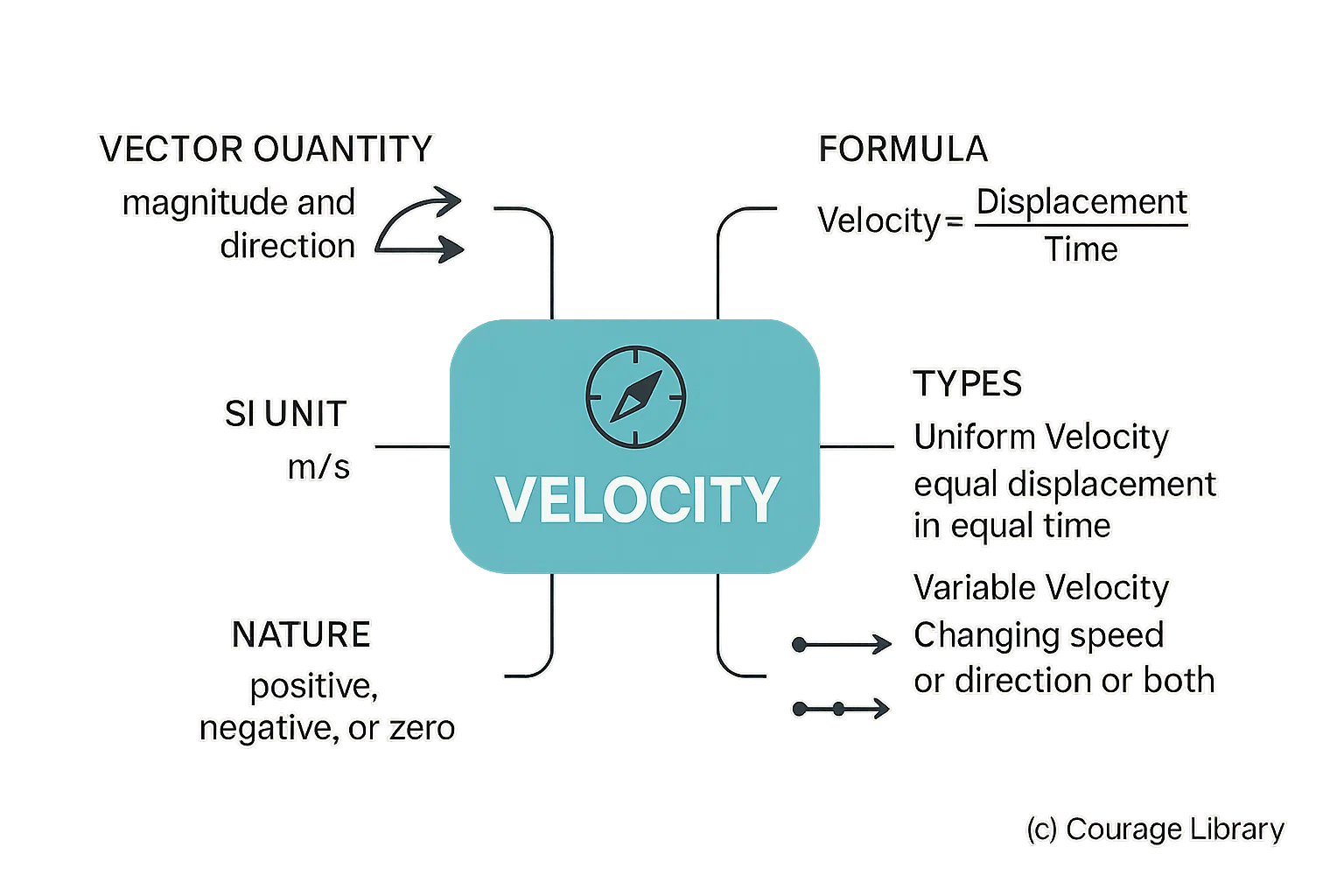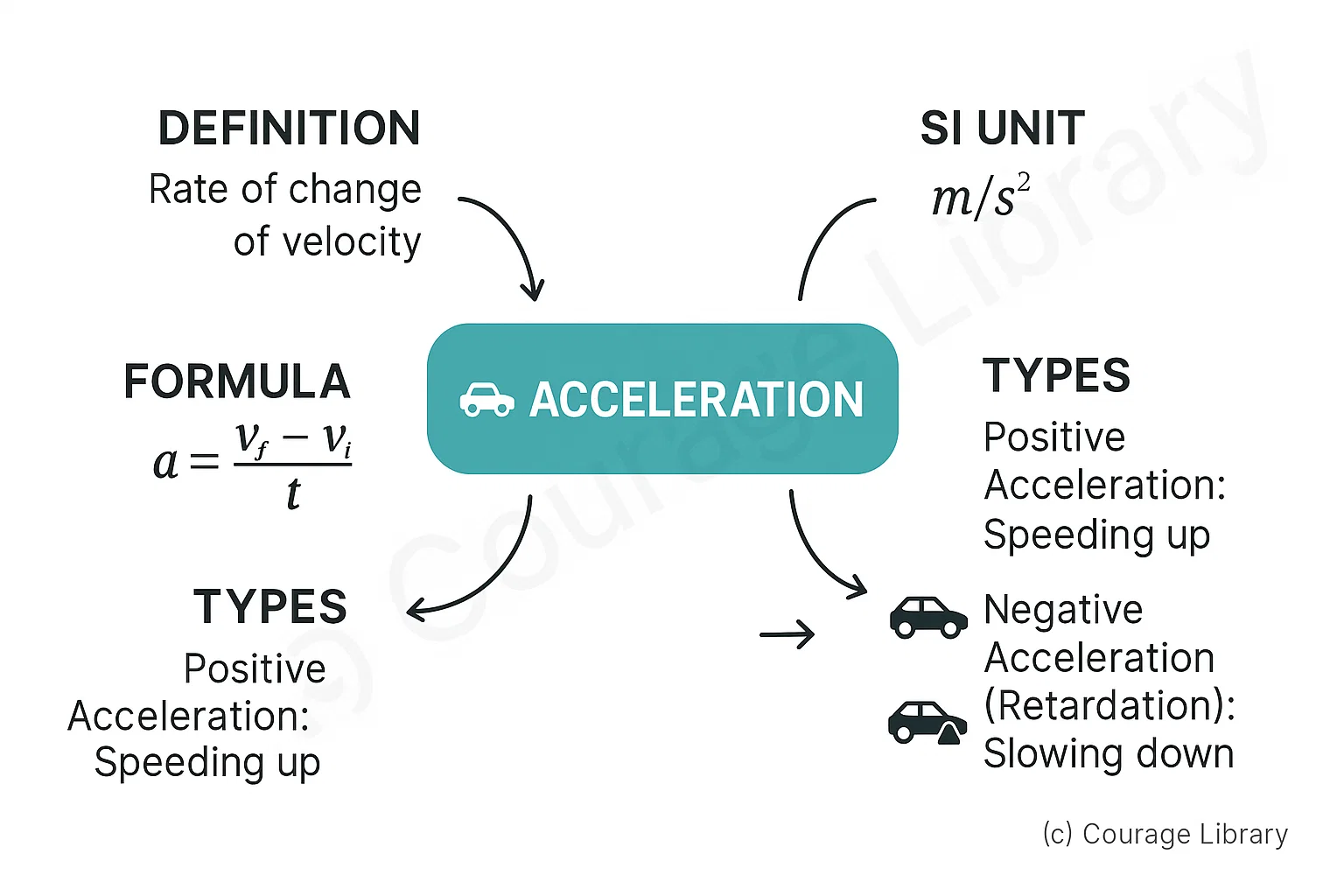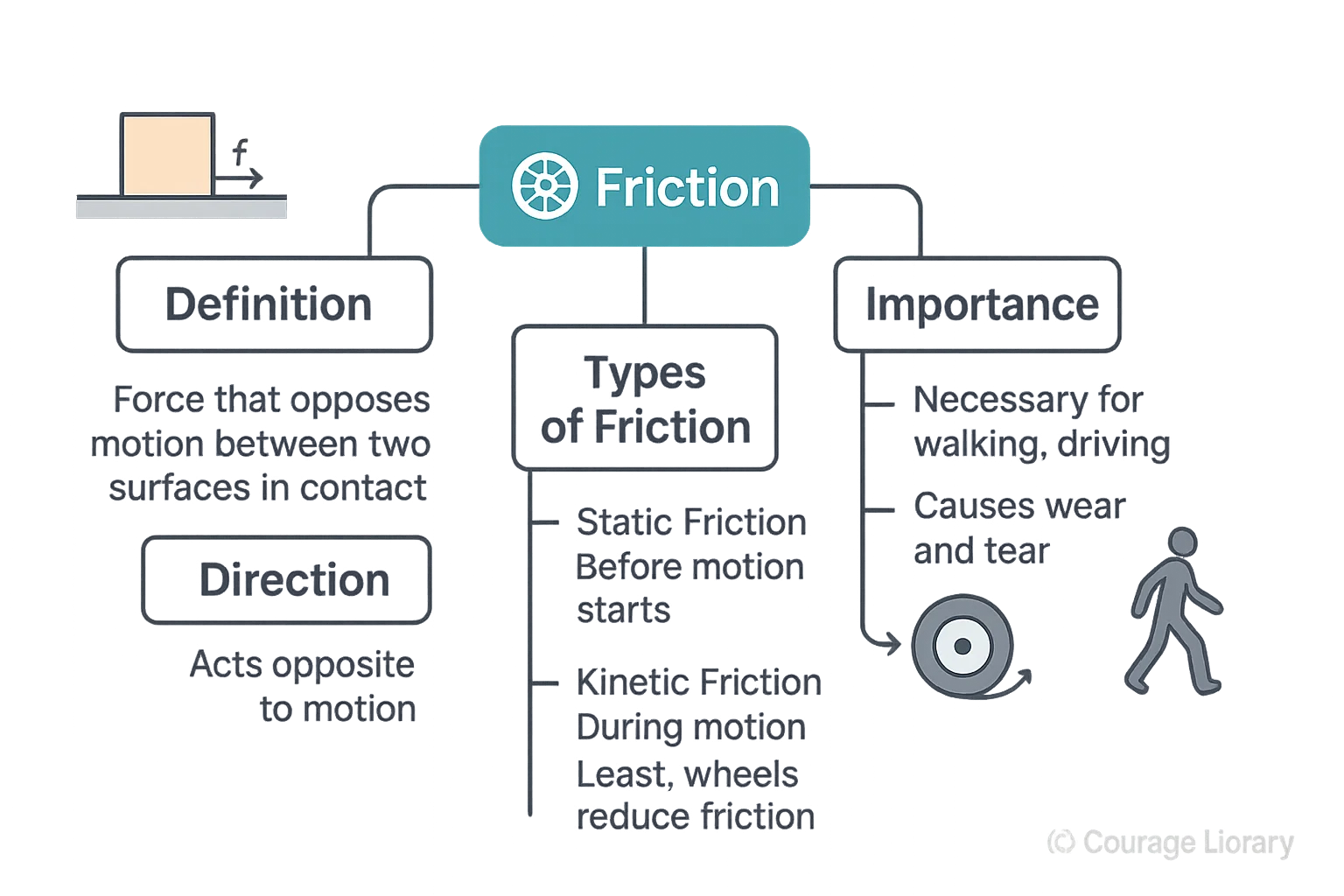SSC CGL - Detailed Guide 2025
Self-Paced Course

Motion and Force
Reference: Lucent GK, NCERT Class 6–12
Speed, Velocity, Acceleration
Speed
- Scalar quantity: only magnitude, no direction
Speed = Distance / Time
- SI Unit: m/s
- Uniform Speed: Equal distances in equal time
- Variable Speed: Unequal distances in equal time


Velocity
- Vector quantity: has both magnitude & direction
Velocity = Displacement / Time
- SI Unit: m/s
- Can be positive, negative, or zero
- Uniform Velocity: Equal displacement in equal time
- Variable Velocity: Changing speed or direction or both
Acceleration
- Rate of change of velocity
Acceleration (a) = (Final velocity − Initial velocity) / Time
- SI Unit: m/s²
- Positive Acceleration → Speeding up
- Negative Acceleration (Retardation) → Slowing down

Newton’s Laws of Motion
| Law | Statement | Explanation | Example |
|---|---|---|---|
| First Law (Law of Inertia) | A body remains at rest or in uniform motion unless acted upon by an external force | Object won’t change motion on its own | A book on a table stays still until pushed |
| Second Law | Force = Mass × Acceleration (F = ma) | Greater mass → more force needed to accelerate | Kicking a football vs. a stone |
| Third Law | For every action, there is an equal and opposite reaction | Forces act in pairs | Gun recoil when fired |
Inertia is directly proportional to mass.
Friction and Circular Motion
Friction
- Force that opposes motion between two surfaces in contact
- Acts opposite to direction of motion
-
Types:
- 1. Static Friction – Before motion starts
- 2. Kinetic Friction – While moving
- 3. Rolling Friction – Least of all (used in wheels)
- Friction is necessary (walking, driving), but also causes wear and tear.

| Way to Reduce Friction | Examples |
|---|---|
| Lubrication | Oil in machines |
| Streamlining | Aircraft, cars |
| Ball bearings | Machine wheels |
Circular Motion
- Motion of an object along a circular path
- Always accelerated due to changing direction
| Type | Description | Example |
|---|---|---|
| Uniform Circular Motion | Constant speed, but direction changes | Earth revolving around Sun |
| Centripetal Force | Force acting toward the center of the circle | String in conical pendulum |
| Centrifugal Force | Pseudo force felt outward (in rotating frame) | Feeling pushed outward in a car taking turn |
Centripetal force is real and required for circular motion.
Centrifugal force is not real in inertial frames (it’s fictitious).
Developed By Roopasree Challa
Next
Start Your SSC CGL Journey Now!
Join Courage Library to experience disciplined study and expert support.
Be a Couragian!